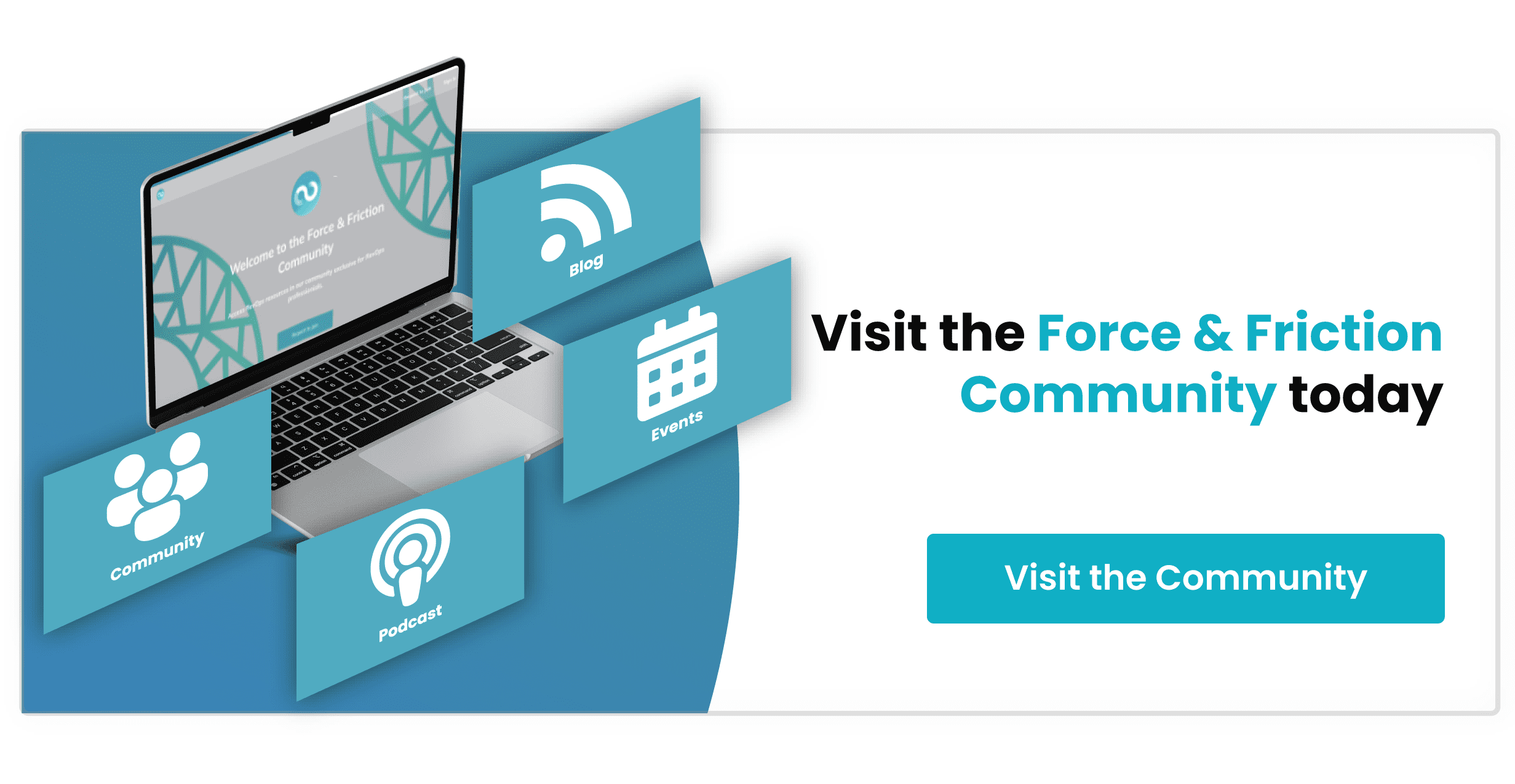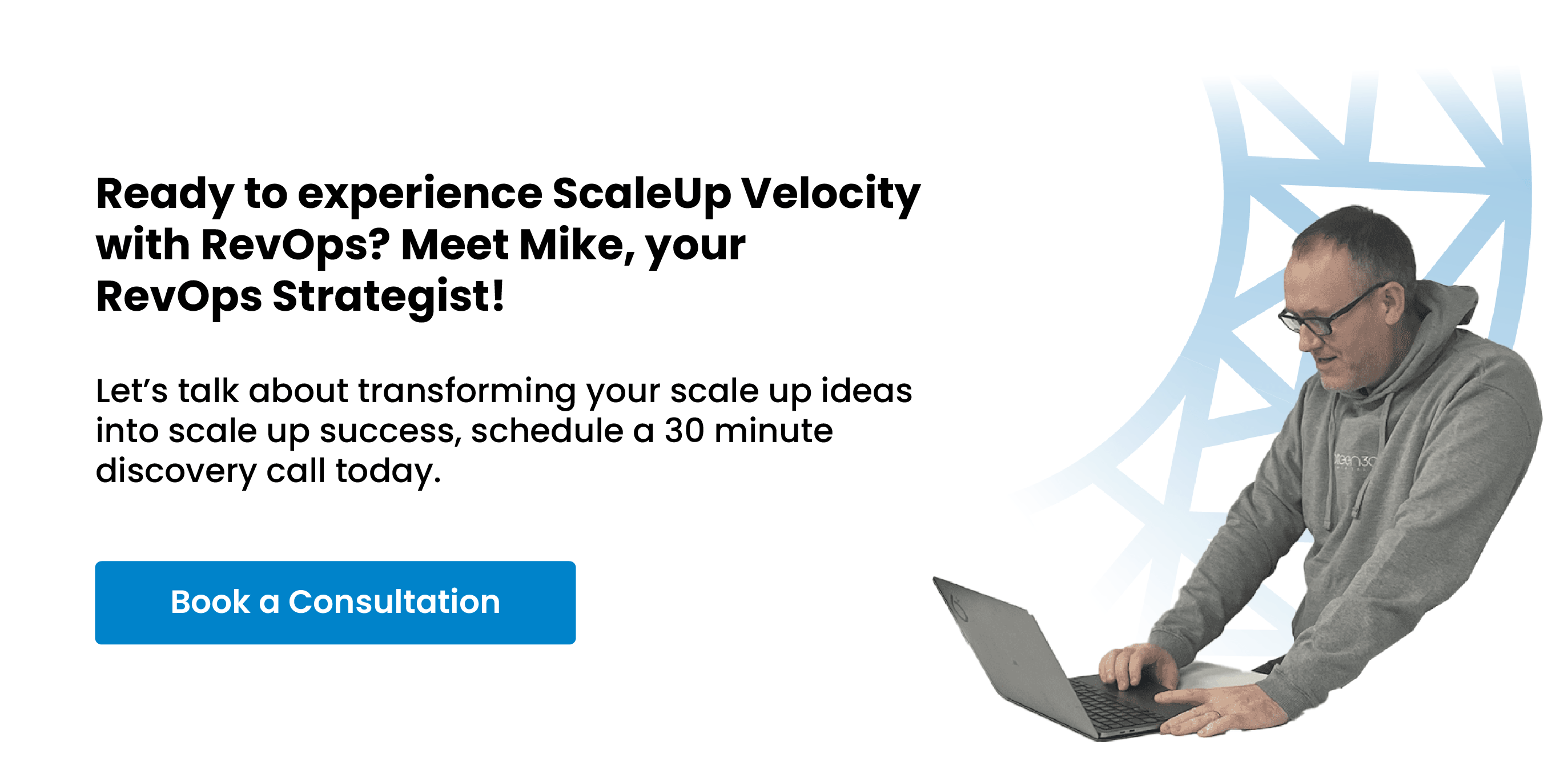
The RevOps Playbook: Your 18-Point Checklist to Drive Revenue and Streamline Operations | #RevOpsLife
As a RevOps strategist, I understand the challenges faced by SaaS/tech organizations striving to achieve sustainable revenue growth in an increasingly competitive market.
Working with leaders in these sectors every day, I see many insights into the bottlenecks and cul-de-sacs (learning exercises let's call them) they turn into, especially when a RevOps strategy is missing, poorly formed or they jumped into tactics first.
One proven approach to unlocking this growth is by implementing Revenue Operations (RevOps). This powerful strategy aligns your sales, marketing, and customer success teams, enabling SaaS/tech organizations to optimize processes, enhance the customer experience, and drive revenue.
A question I often get asked in our sales process is - do you have a checklist?
Feedback for THE CHECKLIST heard
Loud and Clear!:
Listening to the feedback of our prospects I thought it time to write this exact checklist they have been requesting, so If you are currently hitting the ceiling this article is designed to help you through a comprehensive RevOps implementation checklist.
By covering 18 essential points, complete with practical examples, this article will provide actionable steps to successfully integrate RevOps into your organization and elevate your revenue growth.

Fair Warning:
Please note that this checklist serves as a guide and should be used in conjunction with a tailored RevOps game plan strategy that aligns with your organization's unique goals and objectives.
It is important to cross-reference this checklist with your own strategy to ensure a successful and seamless RevOps implementation is achieved, please whatever you do, do not go straight to tactical execution as this defeats the purpose of a well-considered RevOps Strategy.
With that understanding, let's dive into the 18 key points of the RevOps checklist, designed to help you seamlessly implement this transformative strategy and unlock the full potential of your organization's revenue growth.
1: Define and align goals
To start, it's essential that you establish a shared understanding of the organization's objectives and revenue targets. Bring together key stakeholders from sales, marketing, and customer success to define KPIs that track progress.
For example, a SaaS organization might target a specific number of new customer acquisitions, a churn rate reduction, or an increase in customer lifetime value (CLTV).
Your Checklist Points 1 to Consider:
-
Set a quarterly revenue target for the entire organization and split it by service/product line item
-
Develop KPIs for each team, such as MQLs or lead value $ for marketing and deal closing rate for sales
-
Schedule regular check-ins to review progress and adjust goals if necessary
2: Assemble the RevOps team
Appoint your RevOps leader to coordinate efforts across departments and create a cross-functional team with representatives from sales, marketing, and customer success. Clearly define roles and responsibilities for each member.
For instance, the sales representative could focus on pipeline management, while the marketing representative might be responsible for lead generation and nurturing.
Your Checklist Points 2 to Consider:
-
Identify a RevOps leader with experience in sales, marketing, or customer success
-
Appoint representatives from each department, ensuring diverse skills and backgrounds
-
Create a communication plan to keep the entire organization informed about RevOps initiatives
3: Audit existing processes and systems
Analyze your current processes and identify inefficiencies, gaps, and areas for improvement.
For example, you may find that your marketing team generates leads but fails to properly qualify them, resulting in wasted resources and frustrated sales reps.
Assess your technology stack to ensure proper integrations and identify opportunities to streamline operations.
Your Checklist Points 3 to Consider:
-
Conduct a thorough review of your lead generation, nurturing and conversion processes including SLAs
-
Identify bottlenecks, such as long lead response times or inefficient handoffs
-
Evaluate your current tech stack for compatibility, redundancy, and room for improvement
4: Develop a unified customer journey
I cannot stress the importance of your team to map out the entire customer lifecycle, from acquisition to retention, and aligning strategies across teams.
For instance, your marketing team will be focusing on attracting high-quality leads, while your sales team concentrates on converting these leads into paying customers.
Finally, your customer success team should be improving retention and advocacy of customers and driving upsells and referrals.
Your Checklist Points 4 to Consider:
-
Create a detailed customer journey map, highlighting key touchpoints and interactions
-
Identify areas where teams can collaborate to improve the customer experience
-
Develop targeted marketing, sales, and support initiatives for each stage of the customer journey
-
Create marketing, sales and service enablement asset lists to ensure you serve the customer through their entire journey
5: Implement technology and data infrastructure
Choose the right CRM, marketing automation, and customer success platforms that facilitate seamless data flow and integration.
For example, HubSpot could serve as your CRM, Marketing, Sales and Customer Service centralized tech stack, or an alternative could be Salesforce CRM with Marketo or Pardot might be your marketing automation platform.
Establish a centralized data repository for easy access and analysis, such as a data warehouse or a data lake.
Your Checklist Points 5 to Consider:
-
Select the appropriate CRM like HubSpot, marketing automation, and customer success tools for your organization
-
Develop a plan for integrating your chosen tools and ensuring seamless data flow
-
Create a data governance policy to ensure data quality and consistency across platforms.
6: Define and optimize processes
Establish best practices for lead generation, nurturing, and conversion. Implement cross-functional workflows for handoffs between departments, and develop processes for tracking and analyzing customer success metrics.
For example, you could implement a lead scoring system to prioritize leads and create a standardized process for transitioning leads from marketing to sales.
Your Checklist Points 6 to Consider:
-
Establish a standardized lead scoring system to prioritize and qualify leads
-
Develop a clear handoff process between marketing and sales, outlining responsibilities and timelines
-
Create a customer success playbook with guidelines for onboarding, retention, and upselling
7: Train and onboard team members
Provide comprehensive training on new processes, technology, and KPIs, and encourage cross-functional collaboration and knowledge sharing.
For example, you could offer training workshops for using your CRM or marketing automation platform and organize team-building activities to foster collaboration.
Encourage and support your team with Paid Time Off to study in the HubSpot Academy to get qualified on RevOps and other associated methodologies.
Your Checklist Points 7 to Consider:
-
Develop a comprehensive training program for each department
-
Schedule cross-training sessions to promote understanding of other teams' roles and responsibilities
-
Create a knowledge base with resources, best practices, and guidelines for all team members
8: Monitor and adjust performance
Regularly review KPIs, goals, and team performance, and identify areas for improvement.
For instance, if your marketing team consistently falls short of lead generation targets, you may need to reevaluate your marketing strategy and tactics. Communicate updates and progress to stakeholders.
Your Checklist Points 8 to Consider:
-
Establish a regular cadence for reviewing KPIs and assessing team performance
-
Develop a system for tracking and reporting progress to stakeholders
-
Implement a feedback loop to identify and address areas for improvement
9: Scale RevOps efforts
Refine processes and systems as the organization grows, and seek out new technology and tools to support growth and efficiency.
For example, as your customer base expands, you might consider implementing more advanced customer success tools, such as Gainsight or Totango.
Your Checklist Points 9 to Consider:
-
Continuously evaluate and refine processes as your organization grows
-
Stay informed about new technologies and tools that can enhance efficiency and scalability
-
Regularly reassess and adjust goals to ensure alignment with changing business needs
10: Foster a culture of continuous improvement
Encourage open communication and collaboration across your departments, promote a growth mindset, and embrace change. Recognize and reward exceptional performance and results.
For example, establish regular team-building activities, workshops, and brainstorming sessions to foster innovation and knowledge sharing.
Celebrate successes and milestones, while also using setbacks as learning opportunities to drive future progress and growth and training demands for the team.
Your Checklist Points 10 to Consider:
-
Implement a system for recognizing and rewarding top performers
-
Encourage open communication and idea-sharing across teams
-
Promote a growth mindset by celebrating learning opportunities and embracing change
11: Establish governance and compliance
Implement data privacy and security policies in line with GDPR, and other relevant regulations. Develop internal guidelines for data management and sharing, and regularly review and update policies as regulations and industry standards evolve.
For instance, ensure that your marketing team obtains proper consent before sending email campaigns to prospects.
Your Checklist Points 11 to Consider:
-
Develop a data privacy policy to ensure compliance with all relevant regulations
-
Train team members on best practices for data handling and sharing
-
Conduct regular audits to ensure ongoing compliance and adherence to policies
12: Evaluate and optimize your technology stack
Monitor the performance and effectiveness of your existing tech stack, and replace underperforming tools with more efficient solutions. Streamline and simplify the tech stack to reduce redundancy and improve user experience.
For example, if you find that your CRM and marketing automation platforms have overlapping features, consider consolidating them into one solution like the HubSpot CRM Suite.
Your Checklist Points 12 to Consider:
-
Monitor your tech stack performance and user satisfaction through regular surveys and feedback
-
Research alternative solutions to replace underperforming tools or streamline operations
-
Review and optimize integrations between tools to enhance data flow and collaboration
13: Implement revenue attribution models
Develop a clear revenue attribution model to measure the impact of marketing, sales, and customer success efforts. Refine the model to account for changing market dynamics and customer behavior.
For example, you might use a multi-touch attribution model to understand how various marketing channels contribute to sales and revenue.
Your Checklist Points 13 to Consider:
-
Choose an attribution model that best fits your organization's goals and customer journey
-
Regularly review and refine the model based on new data and insights
-
Use attribution data to guide resource allocation and strategic decision-making
14: Enhance customer insights and analytics
Invest in advanced analytics tools like Databox and techniques such as their predictable performance to gain deeper insights into customer behavior and preferences.
Leverage AI and machine learning to predict customer behavior and improve targeting.
Share actionable insights across departments to inform strategy and decision-making. For example, you could use machine learning algorithms to identify patterns in customer behavior and create personalized marketing campaigns.
Your Checklist Points 14 to Consider:
-
Invest in advanced analytics tools to better understand customer behavior and preferences
-
Use predictive analytics to inform marketing, sales, and customer success strategies
-
Share data-driven insights with other teams to facilitate collaboration and informed decision-making
15: Collaborate with other departments
Engage with product, finance, and other relevant departments to align strategies and objectives. Ensure that feedback from sales, marketing, and customer success is considered during product development and enhancement.
For instance, sales representatives may provide insights on feature requests from prospects, which can be incorporated into your new product updates.
Your Checklist Points 15 to Consider:
-
Schedule regular cross-departmental meetings to discuss strategies, challenges, and opportunities
-
Create a feedback loop to ensure that product development incorporates insights from sales, marketing, and customer success teams
-
Align budgeting and resource allocation processes with overall organizational goals
16: Promote innovation and experimentation
Encourage team members to explore new ideas, techniques, and tools to improve revenue operations. Test and validate new approaches in a controlled environment before implementing them organization-wide.
For example, you could run A/B tests on different marketing campaigns to determine which messaging resonates best with your target audience.
Your Checklist Points 16 to Consider:
-
Encourage team members to research new tools, technologies, and tactics
-
Allocate resources for testing and validating new ideas in a controlled environment
-
Share successful experiments and best practices across the organization
17: Regularly assess and adapt to market changes
Stay informed about emerging trends, technologies, and best practices in the SaaS/tech industry. Conduct periodic market research to identify new opportunities and potential threats.
Adapt revenue operations strategies in response to market shifts and competitive pressures.
For example, if a competitor launches a similar product with a lower price point, you may need to adjust your pricing strategy or differentiate your offering with unique features or benefits to counter this race-to-the-bottom strategy your competitor has chosen to take in this example.
Your Checklist Points 17 to Consider:
-
Stay informed about industry trends, competitor activities, and emerging technologies
-
Conduct regular competitor analysis and market research to identify opportunities and threats
-
Update RevOps strategies in response to new information and changing market conditions
18: Establish a feedback loop
Create a process for collecting and analyzing feedback from team members, customers, and partners. Use feedback to identify areas for improvement and inform future strategies.
Encourage open dialogue and foster a culture of continuous learning and improvement. For instance, you could conduct regular customer surveys and hold focus group discussions to gather valuable insights.
Your Checklist Points 18 to Consider:
-
Implement a system for collecting and analyzing feedback from customers, team members, and partners
-
Use feedback to identify areas for improvement and prioritize initiatives
-
Foster a culture of openness and continuous improvement by encouraging honest feedback and active participation in problem-solving
Conclusion
In summary, this comprehensive 18-point RevOps checklist provides you with a broader high-level roadmap for successfully aligning sales, marketing, and customer success teams, optimizing processes and driving sustainable revenue growth in your scale-up SaaS/tech organization.
I understand that each organization has unique needs and challenges. If you require assistance in implementing RevOps or tailoring the checklist to your specific requirements, I invite you to book a consultation with me.
I am here to support you on your journey to unlock the full potential of RevOps for your business.








%20-%20Teal.png?width=500&height=130&name=Force%20%26%20Friction%20-%20Branding%20-%20Logo%20(White)%20-%20Teal.png)